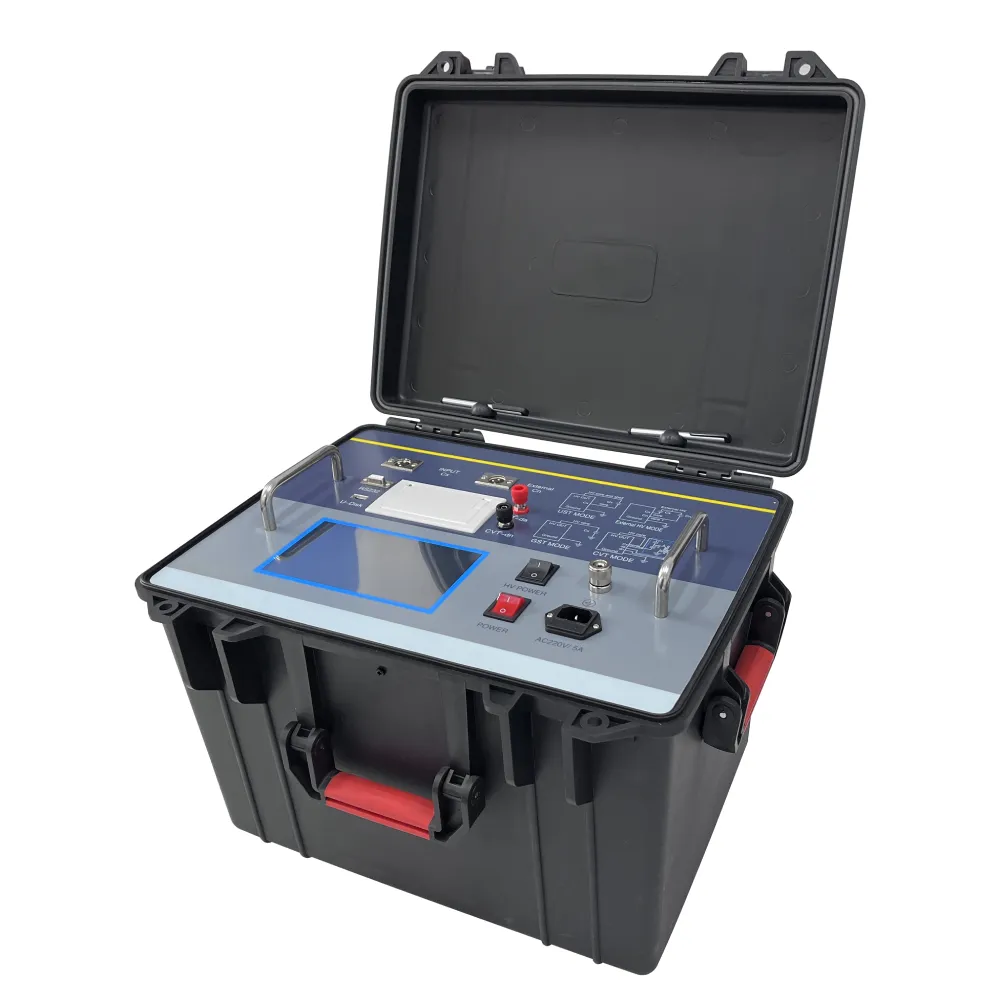 English
English


Testing Transformers with a Multimeter for Enhanced Performance and Reliability Evaluation
Transformer Testing Using a Multimeter
Transformers are critical components in electrical systems, responsible for transferring electrical energy between circuits through electromagnetic induction. Proper testing and maintenance of transformers are essential to ensure their reliability and efficiency. One of the most accessible and effective tools for testing transformers is a multimeter. In this article, we will explore the various methods of transformer testing using a multimeter, emphasizing their importance and application.
Understanding Transformers
Before delving into testing methods, it's essential to understand how transformers operate. A transformer consists of two or more wire coils (windings) wrapped around a magnetic core. When an alternating current (AC) flows through the primary winding, it creates a magnetic field that induces a voltage in the secondary winding. The voltage transformation depends on the turns ratio of the windings. Transformers can either step up or step down voltage, making them critical in power distribution.
Importance of Transformer Testing
Regular testing of transformers is vital to identify potential issues such as insulation breakdown, winding shorts, and core material degradation. Early detection of these problems can prevent transformer failure, reduce downtime, and extend the equipment's lifespan. A multimeter can be a valuable tool in this testing process, offering quick and reliable readings of electrical parameters.
Methods of Transformer Testing with a Multimeter
transformer testing using multimeter

1. Insulation Resistance Testing One of the primary tests conducted using a multimeter is the insulation resistance test. This test checks the integrity of the insulation between the windings and between the windings and the ground. The multimeter can measure resistance in ohms; a high resistance reading (typically over 1 MΩ) indicates good insulation. Conversely, a low reading may suggest insulation deterioration, which requires immediate attention.
2. Voltage Ratio Testing To verify the voltage transformation capability of the transformer, the voltage ratio can be tested using a multimeter. By measuring the input voltage on the primary side and the output voltage on the secondary side, you can calculate the turns ratio. This should match the transformer’s specifications. Any significant deviations indicate possible issues within the windings.
3. Continuity Testing Continuity testing is crucial to ensure that there are no breaks in the windings of the transformer. Using the multimeter in continuity mode, you can check if the primary and secondary coils are intact. A continuous beep or a reading close to zero indicates a good connection, while an open line indicates a problem that needs to be addressed.
4. DC Resistance Measurement Measuring the DC resistance of the windings provides insights into the condition of the transformer. This test can help identify issues such as shorted turns or open circuits. A significant deviation from the rated resistance indicates potential problems that need further investigation.
5. Testing Secondary Load When the transformer is under load, the multimeter can be used to measure the current flowing through the secondary side. Comparing this with the rated output can determine if the transformer is functioning within its specified parameters. Excessive current draw might indicate a failing transformer or an overloaded circuit.
Conclusion
Transformers play a pivotal role in the electrical infrastructure, and their optimal operation is vital for efficient energy distribution. Regular testing using a multimeter is an invaluable practice for electrical engineers and technicians. Through insulation resistance, voltage ratio, continuity, DC resistance measurements, and load testing, potential issues can be identified and rectified before they lead to equipment failure. Embracing these testing methods not only enhances the reliability of transformers but also ensures the overall safety and performance of electrical systems. With proper maintenance and testing, transformers can deliver their essential functions effectively, forming the backbone of modern electrical networks.
-
Differences between open cup flash point tester and closed cup flash point testerNewsOct.31,2024
-
The Reliable Load Tap ChangerNewsOct.23,2024
-
The Essential Guide to Hipot TestersNewsOct.23,2024
-
The Digital Insulation TesterNewsOct.23,2024
-
The Best Earth Loop Impedance Tester for SaleNewsOct.23,2024
-
Tan Delta Tester--The Essential Tool for Electrical Insulation TestingNewsOct.23,2024





